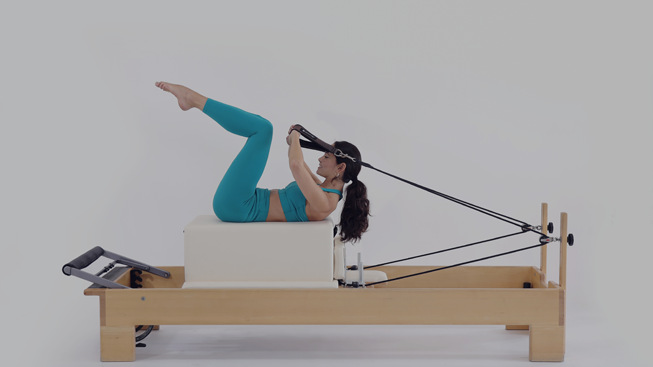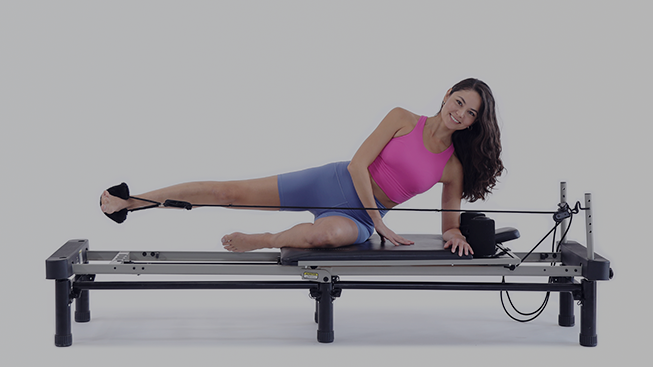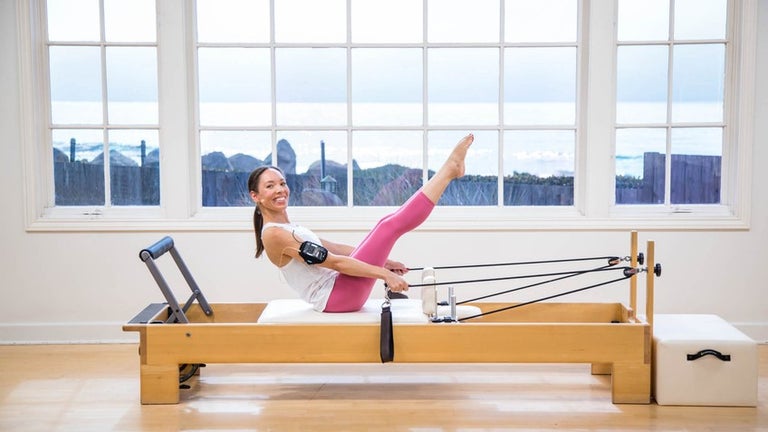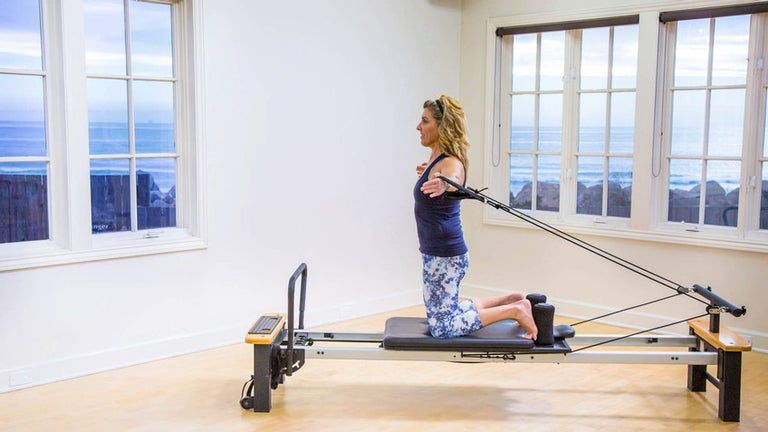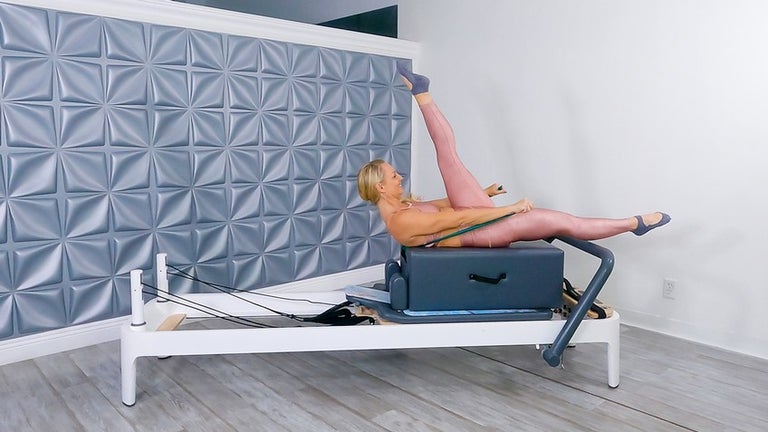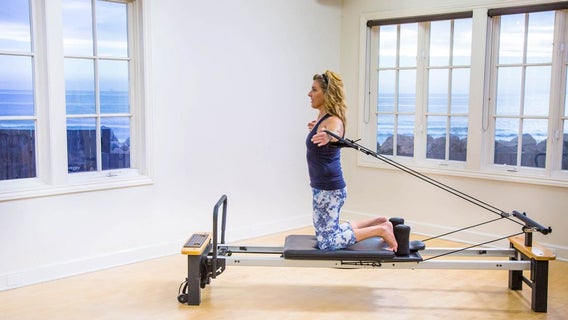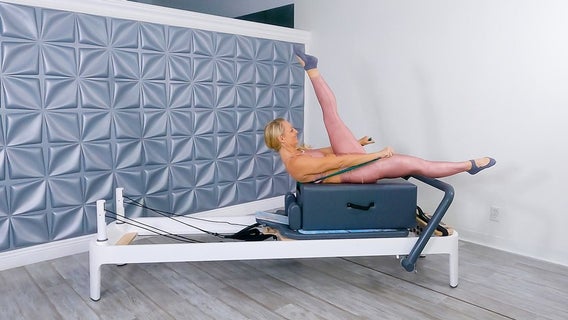Reformer Pilates
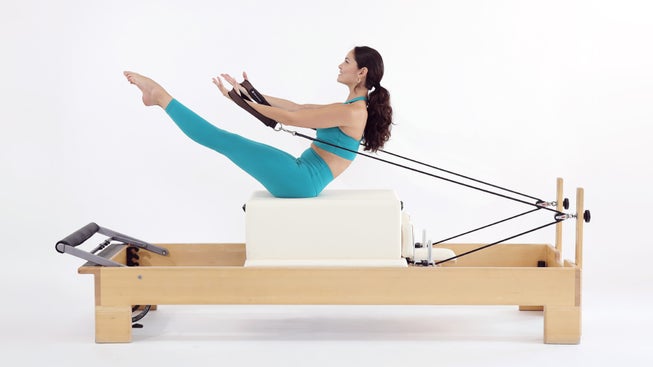
An Introduction to Reformer Pilates
The Pilates Reformer is the first apparatus, or "Pilates machine", Joseph Pilates invented as well as the most well-known. The Reformer's resistance springs are what set the Pilates Reformer apart from other fitness equipment, creating a distinct feel along with the opportunity to simultaneously stretch and strengthen the body. Unlike most strength training equipment that is designed to train one or two muscles at a time, the Reformer works the muscles of the body in concert with one another, resulting in a balanced physique and leaving no muscle over or under-trained. Depending upon the exercise, the spring-based resistance either supports the body as it moves through space or adds challenge.
About the Pilates Reformer
As Reformer workouts have risen in popularity, Pilates equipment manufacturers have tweaked Mr. Pilates' original concept. These contemporary versions incorporate different materials (such as wood in place of metal, or “vegan leather” upholstery instead of vinyl) and options that allow for more variety in spring tension, making the exercises more accessible to Beginners or those with injuries. Since a Reformer’s springs can vary from very light to very heavy resistance, Pilates teachers have felt inspired to create variations based on Mr. Pilates’ original repertoire. Some Reformer models have replaced the traditional Extension Straps with ropes that can be easily shortened or lengthened, allowing for more personalization. Because Pilates Reformers vary by manufacturer, you will feel different amounts of resistance as the carriage moves in and out, giving each brand a distinct feel.
Benefits of Reformer Pilates for Beginners
While a Pilates Reformer may appear strange at first, with its springs, straps, and other moveable parts, it is actually an ideal apparatus for beginning your Pilates practice. That’s because when you lie down on the Reformer with your shoulders resting against the two block shoulder pads at the top of the apparatus and your feet resting against the Footbar, your Pilates instructor can spot imbalances in your body right away before you even start to move. Reformer Pilates is also beneficial for beginners, as it increases core strength, improves posture, and decreases joint and back pain. The Reformer supports you in each exercise and provides instantaneous feedback, which is helpful in starting your Pilates practice.
Pilates Reformer Exercises
Backstroke
Backstroke
This exercise challenges your coordination and stability while strengthening the abdominals.
Side Kick
Side Kick
This exercise strengthens the obliques, glutes, and outer thigh while stabilizing the hips.
Reformer Pilates at Home
After making the initial investment, owning a Pilates Reformer is convenient, as it saves you time commuting to and from a studio, allowing you to workout whenever you want in the comfort of your own home. You can do most, if not all, Reformer exercises you would perform in a studio on a home Reformer. However, omissions or modifications to exercises may make sense for someone practicing on a home Reformer. While it is great to have autonomy over your equipment and workout, Pilates is traditionally taught in the studio setting, where an experienced instructor can observe your body on the equipment and in space. If you begin a home Reformer practice, consider adding instructor-guided sessions, either in-person or online, so that you can progress your practice as Mr. Pilates intended.
Pilates Group Reformer Classes
Since the early 2000s, boutique studios offering group fitness classes, such as spin, boxing, and barre have proliferated across the United States. This new business model, combined with Pilates’ growing popularity, has resulted in a demand for stand-alone group Reformer class studios. These fitness spaces differ from traditional Pilates studios, in which clients take private and semi-private sessions. Whether Pilates studios are independently owned or part of a national or international franchise, they are responsible for introducing the public to Reformer workouts. These practitioners include those who may not have sought out Pilates before, such as younger people, cardio aficionados, and men. Because group Reformer classes will also vary in ambiance, skill level, and size, we suggest trying out a few Pilates instructors and studios so you can find your perfect fit.
Pilates Reformer Classes
Frequently Asked Questions
How many times a week should you do Reformer Pilates?
While it is safe to work out daily on a Reformer, a good goal is two to three times per week when you begin. You may choose to work out on the Reformer more frequently than that when you become familiar with your routine and can practice independently. Pilates Reformer work offers a balanced workout in which no muscle group is over- or undertrained, so there is minimal risk of an overuse injury. Pilates Reformer workouts are a great complement to other forms of exercise such as walking, running, cycling, or sports.
Is 20 minutes of Pilates a day enough?
It depends on your fitness and lifestyle goals. If Pilates is part of a varied fitness program, together with walking, running, cycling, or other aerobic activities, 20 minutes a day is enough to keep your core strong and your limbs and spine flexible. If Pilates is your main form of exercise, 20 minutes a day should help you feel more mobile, taller, and more aware of your posture.
How long should a Pilates Reformer workout be?
It depends on your goals. If you are hoping to build strength and coordination and change your body, a 40 to 60 minute workout, performed regularly, is appropriate. If you are looking for an efficient morning routine to wake up body and mind or a quick lunchtime dose of exercise, you will discover that you can get that in 20 to 30 minutes on the Reformer.
What exercises can you do on a Reformer?
There are hundreds of exercises in the traditional Pilates repertoire alone, and thousands more variations have been created by innovative instructors over the years. You will recognize shapes and movements that are familiar from other disciplines like yoga and weight training. Expect to see movements that resemble planks, splits, lunges, Downward Dog, squats, bicep curls, and even swimming. What all the Pilates repertoire has in common is that all exercises start with core activation, and that the exercises incorporate a set of resistance springs to add resistance. In addition, each exercise is designed to engage the entire body, ensuring that no muscle is over- or under-trained.
What do I need to know about Reformer Pilates?
Reformer Pilates is a form of exercise based on the work of Joseph Pilates (1883-1967) that is performed on a specially designed apparatus called a Reformer. A series of springs at the bottom of the carriage provides resistance, challenges your balance, and promotes mind-body awareness. The Reformer provides a full-body workout with an emphasis on cultivating a strong core. Reformer Pilates is appropriate for all levels, ages, and life stages, and is supremely adaptable to the individual needs of the exerciser. A good way to begin Reformer Pilates is with a private lesson with an experienced instructor who can introduce you to the apparatus and show you how to adjust the springs and other moving parts.
Does the Pilates Reformer tone your body?
Reformer Pilates is renowned for its ability to create "toned" bodies. Equipped with a set of variable resistance springs, the Reformer is known for creating a distinctive balanced physique. During a Pilates workout, no muscle group is over- or under-trained, unlike traditional weight training which focuses on individual muscles or muscle groups instead of challenging the body as a whole. Each exercise on the Reformer requires full-body involvement, from the deepest layers of abdominal muscles to the torso to the limbs and even the hands and feet. The result is a method of exercise that produces aesthetically pleasing results while also challenging the mind-body connection and increasing body awareness.
What are the health benefits of the Pilates Reformer?
The Pilates Reformer is an excellent addition to a health and wellness program. It's supremely adaptable to all fitness levels, ages, and life stages. The Reformer tones the body via a set of resistance springs, but the benefits are more than a streamlined physique. Pilates Reformer exercises strengthen the muscles of the core, which is important for injury prevention. Reformer work challenges your balance, helping to reduce your risk of falls. Exercising on a Reformer also improves your cardiovascular endurance, posture, body awareness, and mental focus.
Can anyone use a Pilates Reformer?
The Pilates Reformer can be used by most people as long as they can bend down or kneel to mount the apparatus, which is about 18 inches off the floor. Once you are lying or seated on the Reformer, your instructor will help you adjust the springs and other movable parts until you get the hang of it. The actual exercises are taught according to particular levels, meaning that you will begin with basic exercises and move on to more challenging exercises as you progress. If you have particular concerns about any past or current injuries or medical conditions that might make it hard for you to put weight on certain body parts or to move from standing to sitting to lying down, speak with your medical provider before you begin. A Pilates instructor should also be able to customize your workout to your body's needs.
Your Pilates Anytime Membership Benefits
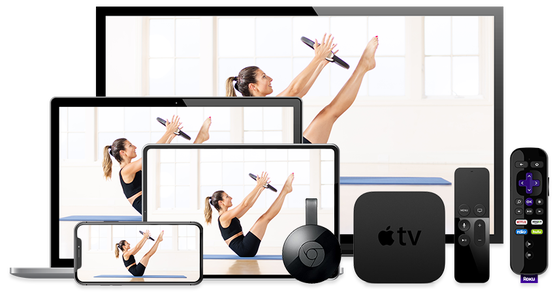
- 15-Day Free Trial
- Unlimited Access to Thousands of Classes
- 95+ Pilates Programs and Challenges
- No Ads
- New Videos Weekly
- Available on All Your Favorite Devices
